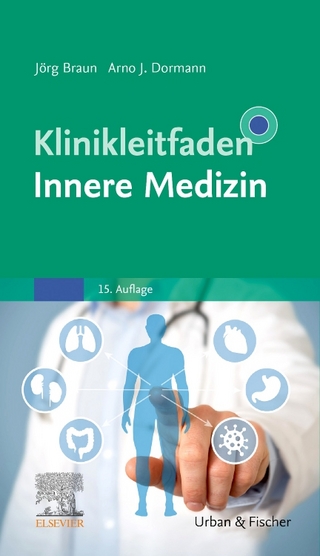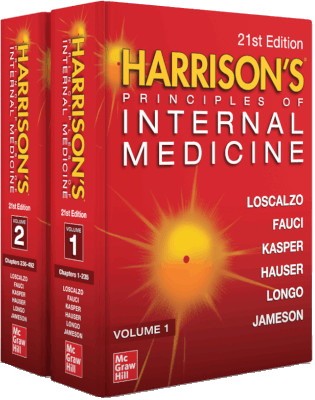
The Pituitary Adenoma
Kluwer Academic/Plenum Publishers (Verlag)
978-0-306-40382-8 (ISBN)
- Titel ist leider vergriffen;
keine Neuauflage - Artikel merken
Seven major developments in these areas have occurred independently and almost simultaneously that have virtually revolutionized our approach to pituitary adenomas.
I. Pathophysiology of Pituitary Tumors.- 1 Anatomical and Physiological Basis of Hypothalamic-Pituitary Regulation.- 1. Anatomical Overview.- 2. The Neurohypophysis.- 2.1. Anatomy.- 2.2. Hormone Synthesis, Transport, and Secretion.- 2.3. Physiological Regulation of Neurohypophyseal Hormone Release.- 3. The Median Eminence and Tuberohypophyseal Neurons.- 3.1. Anatomy.- 3.2. The Portal Vessel-Chemotransmitter Hypothesis and Hypophysiotropic Hormones.- 4. Regulation of Secretion of the Tuberohypophyseal Neurons: Neuropharmacology of Hypothalamic Regulation.- 4.1. Neurotransmitter Regulation of Hypophysiotropic Neurons.- 4.2. Endocrine Significance of Neuropeptides.- 5. Interaction of the Hypothalamic-Pituitary Unit with Feedback Control by Target-Gland Secretions.- References.- 2 Etiology of Pituitary Adenomas.- 1. Introduction.- 2. Insights into The Pathogenesis of Adenoma Based on Embryological Considerations.- 3. Pituitary Adenomas Arising Due to Prolonged Hormonal Stimulation or Loss of Normal Negative-Feedback Control.- 3.1. Estrogen Effects.- 3.2. Response to Loss of Negative-Feedback Control.- 4. Role of the Hypothalamus in Pathogenesis and Manifestations of Pituitary Adenomas.- 4.1. Physiological Responses in Patients with Pituitary Hypersecretion: Acromegaly.- 4.2. ACTH-Secreting Adenomas.- 4.3. Prolactin-Secreting Tumors.- References.- 3 The Pathology of Pituitary Adenomas.- 1. Traditional Concepts.- 2. Modern Techniques and Their Limitations.- 2.1. Electron Microscopy.- 2.2. Immunological Staining.- 3. Electron Microscopy of Pituitary Adenomas.- 3.1. Somatotropic (Growth Hormone-Producing) Adenomas.- 3.2. Prolactinomas.- 3.3. Mixed Prolactin- and Growth-Hormone-Producing Tumors.- 3.4. Corticotropic Adenomas.- 3.5. Thyrotropic Adenomas.- 3.6. Gonadotropic Adenomas.- 3.7. Acidophilic Stem-Cell Adenomas.- 3.8. Oncocytomas.- 4. Additional Features.- 4.1. Amyloid Production.- 4.2. Hemorrhage and Infarction.- 4.3. Carcinoma of the Pituitary Gland.- 5. Incidence of the Various Types of Pituitary Adenomas.- 6. Frozen-Section Diagnosis of Pituitary Adenomas.- References.- II. Clinical Features of Pituitary Tumors.- 4 Galactorrhea Syndromes.- 1. Introduction.- 2. Materials and Methods.- 2.1. Patients.- 2.2. Anatomical Evaluation of the Pituitary Fossa.- 2.3. Endocrinological Evaluation of Galactorrhea Patients.- 2.4. Assay Procedures.- 3. Results.- 3.1. Categories of Galactorrhea Patients.- 3.2. Clinical Evaluation of Patients with Galactorrhea: Etiological Associations and Patient Complaints.- 3.3. Prolactin Secretion in Patients with Galactorrhea.- 3.4. Gonadotropic Function in Patients with Galactorrhea.- 3.5. Growth Hormone, Adrenocorticotropin, and Antidiuretic Hormone Function in Patients with Galactorrhea.- 4. Discussion.- 5. Roentgenographic Study.- 6. Endocrine Evaluation in Differential Diagnosis.- 7. Natural History of Adenomas.- 8. Conclusions.- References.- 5 Prolactin-Secreting Adenomas in the Male.- 1. Introduction.- 2. Results.- 2.1. Males with Prolactin-Secreting Tumors.- 2.2. Males with Nonsecreting Tumors.- 3. Discussion.- 4. Conclusion.- References.- 6 Growth-Hormone-Secreting Pituitary Adenomas.- 1. Introduction.- 2. Pathogenesis of Acromegaly.- 3. Pathology of Acromegaly.- 4. Clinical Features of Acromegaly.- 4.1. Acral Changes.- 4.2. Headaches.- 4.3. Neuromuscular Changes.- 4.4. Skeletal and Bony Changes.- 4.5. Other Organs.- 5 Effects of Acromegaly on Other Endocrine Functions.- 6. Diagnosis of Acromegaly.- 7. Treatment of Acromegaly.- 8. Associated Tumors.- 9. Causes of Acromegaly Other Than a Pituitary Adenoma.- 10. Differential Diagnosis.- 11. Prognosis in Acromegaly.- 12. Summary.- References.- 7 ACTH-Secreting Adenomas.- 1. Introduction.- 2. Regulation of ACTH Secretion.- 3. Relationship of ACTH to ?-Lipotropin and the Endorphins.- 4. Clinical Features of Cushing's Syndrome.- 5. Laboratory Diagnosis of Cushing's Disease.- 6. Pathogenesis of Cushing's Disease.- 7. Therapy of Cushing's Disease.- 8. Management of Patients Undergoing Ablative Therapy.- 9. Conclusions.- References.- 8 Thyrotropin- and Gonadotropin-Secreting Pituitary Adenomas.- 1. Introduction.- 2. TSH-Secreting Pituitary Adenomas.- 2.1. Primary Hypothyroidism.- 2.2. Primary Hypothalamic-Pituitary Disease.- 2.3. Pituitary Hyperthyroidism ("TSH Toxicosis").- 2.4. Summary.- 3. FSH- and LH-Secreting Pituitary Adenomas.- 3.1. Adenomas Associated with Chronic Hypogonadism.- 3.2. Primary Pituitary Adenomas That Secrete Gonadotropins.- 3.3. Summary.- References.- 9 Nonsecreting Adenomas.- 1. Introduction.- 2. Prevalence.- 3. Presentation.- 4. Differential Diagnosis.- 5. Evaluation.- 6. Therapy.- 7. Summary.- References.- 10 Sellar and Parasellar Lesions Mimicking Adenoma.- 1. Introduction.- 2. Symptoms and Signs of Parasellar and Intrasellar Nonpituitary Lesions.- 3. Radiological Presentation of Intrasellar and Parasellar Nonpituitary Lesions.- 4. Specific Lesions of the Parasellar Region.- 4.1. Craniopharyngioma.- 4.2. Suprasellar and Intrasellar Cysts.- 4.3. Rathke's Cleft Cyst.- 4.4. Arachnoid Cyst.- 4.5. Chordoma.- 4.6. Suprasellar Germinoma (Atypical Teratoma, Ectopic Pinealoma).- 4.7. Dermoid and Epidermoid Tumors.- 4.8. Optic Nerve Glioma.- 4.9. Hypothalamic Glioma.- 4.10. Microglioma.- 4.11. Parasellar Meningioma.- 4.12. Pituitary Metastases.- 5. Miscellaneous Tumors.- 6. Aneurysms.- 7. Pituitary Abscess.- 8. Granulomatous and Infectious Diseases.- 8.1. Tuberculosis.- 8.2. Sarcoid.- 8.3. Histiocytosis X.- 9. Other Infectious Diseases.- 10. Sphenoid Sinus Mucoceles.- 11. Empty Sella.- References.- III. Clinical Evaluation of Pituitary Tumors.- 11 Diagnostic Tests for the Evaluation of Pituitary Tumors.- 1. Introduction.- 2. Regulation of Pituitary Secretion.- 3. Basal Levels of Pituitary Hormones.- 4. Tests of Anterior Pituitary Secretion.- 4.1. Growth Hormone (GH).- 4.2. Prolactin (PRL).- 4.3. Adrenocorticotroph (ACTH).- 4.4. TSH Secretion.- 4.5. Gonadotropin (LH and FSH) Secretion.- 5. Special Tests of Hypothalamic-Pituitary Function.- 5.1. Cerebrospinal Fluid (CSF) Pituitary Hormone Levels.- 5.2. Measurement of Glycoprotein Fragments in Biological Fluids.- 5.3. Sleep EEG Studies.- 5.4. Prednisone-TRH Reserve Test.- 5.5. Cytochemical Bioassays of Polypeptide Hormones.- 5.6. Gel Chromatography and Radioreceptor Assays.- 6. Posterior Pituitary Function.- 7. Summary and Conclusion.- References.- 12 Pituitary Hormone Concentrations in Cerebrospinal Fluid in Patients with Pituitary Tumors.- 1. Introduction.- 2. Factors that Regulate the Presence of Anterior Pituitary Hormones in the Cerebrospinal Fluid.- 2.1. Molecular Weight.- 2.2. Retrograde Transport from Pituitary to Brain.- 2.3. Pituitary Tumors and Cerebrospinal Fluid Secretion.- 2.4. Other Factors That Might Affect Anterior Pituitary Hormones in the Cerebrospinal Fluid.- 3. Functional Role of Anterior Pituitary Hormones in the Cerebrospinal Fluid.- 4. Specific Hormones in the Cerebrospinal Fluid.- 4.1. Growth Hormone.- 4.2. ACTH.- 4.3. Prolactin.- 4.4. Thyroid-Stimulating Hormone.- 4.5. Luteinizing Hormone and Follicle-Stimulating Hormone.- 4.6. ?-Lipotropin and "-Melanocyte-Stimulating Hormone".- 5. Extrapituitary Sources of Pituitary Hormones.- 6. Conclusions.- References.- 13 Ophthalmological Evaluation of Pituitary Adenomas.- 1. Visual Involvement in Pituitary Adenomas.- 2. Visual-Field Testing.- 2.1. Visual Criteria in the Management of Pituitary Adenomas.- 2.2. Visual Evoked Potentials (VEPs).- 3. Chiasmal Syndromes.- 3.1. Relationships of the Chiasm.- 3.2. Axonal Arrangement in the Anterior Visual Pathways.- 4. Patterns of Visual Loss.- 4.1. Bitemporal.- 4.2. Bitemporal Hemianopic Scotomata.- 4.3. Monocular Visual-Field Defects.- 4.4. Binasal Field Loss.- 5. Causes of Bitemporal Hemianopia Other Than Chiasmal Lesions.- 6. Sensory Phenomena Associated with Chiasmal Compression.- 7. Ophthalmoscopy in Pituitary Adenomas.- 8. Ocular Motor Involvement in Pituitary Adenomas.- 8.1. See-Saw Nystagmus.- 9. Pituitary Apoplexy and Its Variants.- 10. Summary.- 11. Appendix: Perimetric Techniques.- 11.1. Color Visual Fields.- References.- 14 The Radiology of Pituitary Adenomas-An Update.- 1. Introduction.- 2. Plain Films of the Sella Turcica.- 3. Tomography of the Sella Turcica.- 4. Radiological Investigation of Patients with Suspected Prolactinomas.- 4.1. Value of Tomography.- 4.2. Value of Computed Tomography.- 4.3. Value of Pneumoencephalography.- 5. Radiological Investigation of Patients with Tumors Other Than Prolactinomas.- 5.1. Value Angiography.- 5.2. Differential Diagnosis of Pituitary Adenomas.- References.- IV. Treatment of Pituitary Tumors.- 15 Medical Therapy of Pituitary Tumors.- 1. Introduction.- 2. Growth Hormone and Acromegaly.- 2.1. Dopamine Agonists.- 2.2. Serotonin Antagonists.- 2.3. Medroxyprogesterone Acetate.- 2.4. Estrogens.- 2.5. Other Agents.- 3. Cushing's Disease.- 3.1. Antiserotonin Agents.- 3.2. Bromocriptine.- 3.3. Adrenolytic Therapy.- 4. Prolactin Hypersecretion.- 4.1. Bromocriptine.- 4.2. Other Drugs.- 5. Conclusions.- References.- 16 General Considerations in the Surgical Treatment of Pituitary Tumors.- 1. Historical Background.- 2. Indications.- 2.1. Nonfunctional Tumors.- 2.2. Functional Tumors.- 2.3. Pituitary Apoplexy.- 2.4. Uncertain Diagnosis.- 2.5. Treatment Failures.- 2.6. Cerebrospinal Fluid Leaks.- 3. Goals of Surgery.- 3.1. Cushing's Disease.- 3.2. Nelson's Disease.- 3.3. Acromegaly.- 3.4. Prolactinomas.- 4. Surgery and Radiation.- 5. Choice of Surgical Approach.- 6. Interpretation of Surgical Results.- 7. Summary.- References.- 17 Anatomical Aspects of the Transseptal Approach to the Sphenoid Sinus.- 1. Introduction.- 2. The External Nose.- 2.1. Cosmetic Analysis.- 2.2. Influence of the Septum.- 3. The Nasal Cavity.- 3.1. Nostril.- 3.2. Valve.- 3.3. Nasal Atrium.- 3.4. Turbinates and Meati.- 3.5. Choana.- 3.6. Physiology of the Normal Nasal Airway.- 4. The Premaxilla.- 4.1. Nasal Spine and Premaxilla.- 4.2. Soft-Tissue Coverings.- 5. The Nasal Septum.- 5.1. Supporting Structures.- 5.2. Mucosa.- 5.3. Submucosal Tunnels.- 6. The Sphenoid Sinus.- 6.1. Rostrum, Floor, Face, and Ostia.- 6.2. Interior of the Sphenoid Sinus.- 6.3. Variations in Pneumatization.- 7. Conclusions.- References.- 18 Transsphenoidal Surgery for Pituitary Tumors.- 1. Introduction.- 2. Technique.- 3. Anatomical Pitfalls.- 3.1. Sphenoid Sinus.- 3.2. Sella Turcica.- 3.3. Intrasellar Contents.- 3.4. Discussion.- 4. Results.- 4.1. Nonfunctional Tumors.- 4.2. Prolactin-Secreting Tumors.- 4.3. ACTH-Secreting Tumors.- 4.4. Growth-Hormone-Secreting Tumors.- 5. Complications.- 6. Summary.- References.- 19 Transfrontal Surgery for Pituitary Tumors.- 1. Introduction.- 2. Anatomical Considerations.- 3. Surgical Techniques.- 4. Results.- 5. Summary.- References.- 20 Endocrine Management after Pituitary Surgery.- 1. Introduction.- 2. Pituitary-Adrenal Function.- 2.1. Postoperative Testing of the Hypothalamic-Pituitary-Adrenal Axis.- 2.2. Management of Chronic Secondary Adrenocortical Insufficiency.- 3. Disorders of Antidiuretic Hormone (ADH) Secretion.- 3.1. Diabetes Insipidus.- 3.2. Syndrome of Inappropriate ADH (SIADH).- 4. Hypothyroidism.- 4.1. Management of Chronic Central Hypothyroidism.- 5. Hypogonadism.- 6. Growth-Hormone Deficiency.- References.- 21 Conventional Radiotherapy and Pituitary Tumors.- 1. Introduction.- 2. Effects of Irradiation on Normal Hypothalamic-Pituitary Function.- 3. Pituitary Adenomas.- 3.1. Managment of Treatment.- 3.2. Radiotherapy.- 3.3. Results of Radiotherapy.- 3.4. Complications of Radiotherapy.- 4. Discussion.- 4.1. Comments on the Therapeutic Approach Based on the Proposed Staging System.- References.- 22 Radiosurgery Therapy for Pituitary Adenoma.- 1. Introduction.- 2. Epidemiology.- 3. Patients and Indications.- 4. "Informed Consent".- 5. "Cost-Effectiveness".- 6. Method.- 7. Procedures.- 7.1. Radiosurgical.- 7.2. Microsurgical.- 8. Results.- 8.1. Acromegaly.- 8.2. Cushing's Disease.- 8.3. Nelson's Syndrome.- 8.4. Prolactinemia.- 8.5. Nonfunctioning Adenomas.- 9. Radiographic Classification.- 10. Malignancy.- 11. Summary.- References.- 23 Overview of Pituitary Tumor Treatment.- 1. Introduction.- 2. Large Nonfunctioning Tumors.- 2.1. Radiation Treatment of Large Pituitary Tumors.- 2.2. Surgical Treatment of Large Pituitary Tumors.- 2.3. Considerations in the Choice of Therapy for Large Tumors.- 3. Acromegaly.- 3.1. Medical Treatment of Acromegaly.- 3.2. Radiation Treatment of Acromegaly.- 3.3. Surgical Treatment of Acromegaly.- 3.4. Considerations in the Choice of Therapy for Acromegaly.- 4. Prolactinomas.- 4.1. Medical Treatment of Prolactinomas.- 4.2. Radiation Treatment of Prolactinomas.- 4.3. Surgical Treatment of Prolactinomas.- 4.4. Considerations in the Choice of Therapy for Prolactinomas.- 5. Cushing's Disease.- 5.1. Medical Treatment of Cushing's Disease.- 5.2. Radiation Treatment of Cushing's Disease.- 5.3. Surgical Treatment of Cushing's Disease.- 5.4. Considerations in the Choice of Therapy for Cushing's Disease.- 6. Miscellaneous Tumors and Lesions.- 7. Summary.- References.
| Erscheint lt. Verlag | 1.8.1980 |
|---|---|
| Zusatzinfo | 234 black & white illustrations, biography |
| Sprache | englisch |
| Gewicht | 1496 g |
| Themenwelt | Medizinische Fachgebiete ► Innere Medizin ► Diabetologie |
| Medizinische Fachgebiete ► Innere Medizin ► Endokrinologie | |
| Medizin / Pharmazie ► Medizinische Fachgebiete ► Onkologie | |
| Studium ► 1. Studienabschnitt (Vorklinik) ► Biochemie / Molekularbiologie | |
| ISBN-10 | 0-306-40382-X / 030640382X |
| ISBN-13 | 978-0-306-40382-8 / 9780306403828 |
| Zustand | Neuware |
| Haben Sie eine Frage zum Produkt? |
aus dem Bereich


